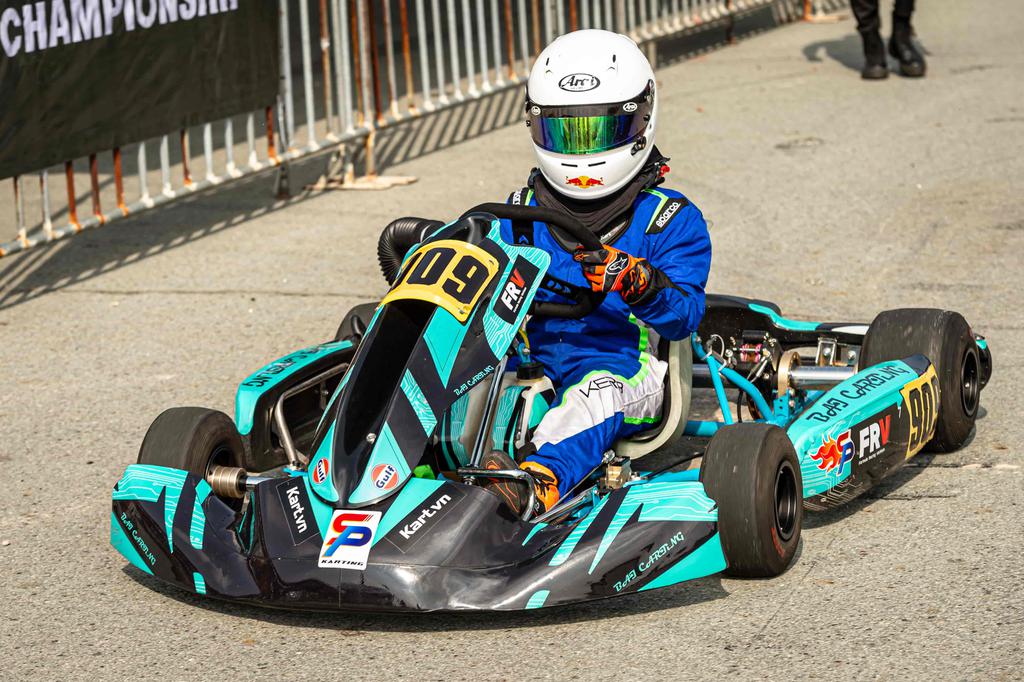Can Go-Karts Flip Over?
Technically speaking, a go-kart can indeed flip over. Similar to any other racing vehicle, from NASCAR to F1, go-karts can flip in extreme situations. If you're driving very fast, especially in a Superkart or a 125cc go-kart, you can flip it if you take a sharp turn without reducing speed. Generally, go-karts don't flip due to how they are designed. They have a low center of gravity achieved by placing the wheels far apart. This ensures that the vehicle maintains contact with the ground throughout fast turns.

But what exactly happens when a go-kart flips? Is it safe to be in the kart, and is there a way to avoid injury?
If a go-kart flips, is it safe?
You would need to reach a very high speed for a go-kart to flip. Speeds of 70-140mph (112-225km/h) are considered very fast, and the higher the speed, the greater the likelihood of your go-kart flipping.
What happens in such a case? Track technicians will assist you in getting out of the kart and removing the vehicle from the track. Go-karts don't have any safety features like those in cars, such as roll cages, seat belts, or airbags.
So, when you flip over, your head and shoulders will make contact with the pavement. This can cause minor injuries, such as neck fractures or shoulder sprains, or more severe damage in serious cases. Additionally, in some instances, you may be ejected from the kart.
However, some go-karts are safer than others. Go-karts with wheel enclosures are the safest and are often the ones rented out at go-kart tracks.
Their weight distribution helps prevent them from flipping. Also, your kart's wheels will never make contact with another go-kart, which is also a common reason for go-karts to flip.
This means that a go-kart can still flip, even if you take all necessary safety precautions. In such cases, the karting community still debates whether we should use seat belts or not.
Why do some go-karts have seat belts while others don't?
Firstly, seat belts can save your life in some cases, whether you're driving a car or racing a go-kart. When racing a kart, seat belts protect your torso and abdomen as well as your back and neck.
However, what will happen in the event of a collision? Some drivers choose not to use seat belts on their go-karts because all you're doing is strapping yourself into the kart, which won't protect you when you experience a collision.
And when it comes to flipping, nobody wants to be strapped under a go-kart while its weight pushes your head and neck down onto the pavement. However, if your kart has a full-frame (or roll cage), you should also wear seat belts because the frame can pose a danger in case of a collision.
Simply put, some go-karts, like rental karts, have seat belts for safety reasons. However, professional go-karts capable of reaching high speeds, such as 125cc karts, may not have seat belts because they won't protect you from a major collision. However, that depends on the driver and the rules of the race.
How to Avoid Your Go-Kart Flipping
While flipping any go-kart is still rare, you should also learn about what not to do when go-karting to avoid flipping:
Sharp Turns at High Speeds: If you're heading straight into a main straight at maximum speed, you must always slow down before taking hairpin turns. Taking turns too fast or too sharply increases the likelihood of your kart flipping. Additionally, you'll often drift, which isn't good for your speed.
Colliding with Other Drivers or Objects on the Track: While you may not always be able to avoid it, you should try to avoid colliding with other drivers while karting. Karts are not bumper cars and shouldn't be treated as such. Additionally, of course, you shouldn't collide with any part of the track, such as guardrails or any loose parts.
Shifting the Kart's Weight: This is mostly for experts. Don't place your kart's weight too high; otherwise, you'll quickly increase the likelihood of it flipping. And the advantage of racing that you can gain will be worthless if you end up upside down.

Conclusion:
It's worth noting that flipping a go-kart is very rare. Although some very serious cases have been listed above, you shouldn't worry about your kart flipping if you're racing casually or for fun. Even if you're a professional driver, nothing will happen as long as you don't heavily modify your kart.
